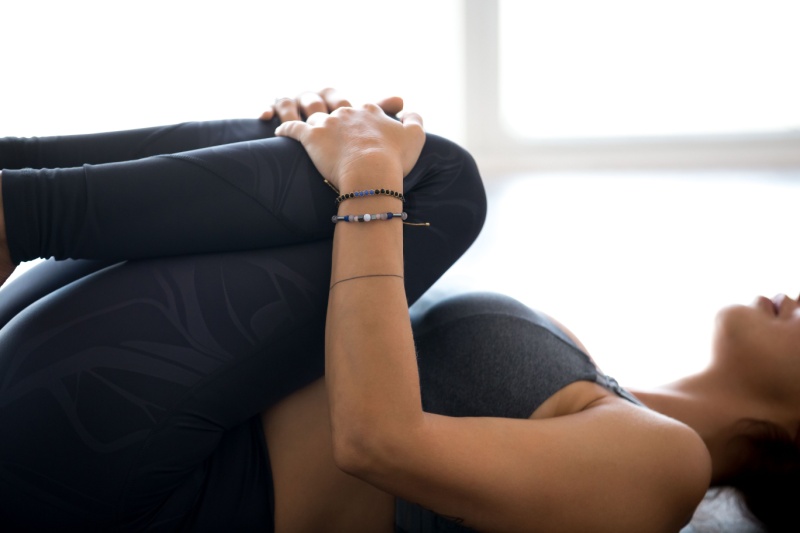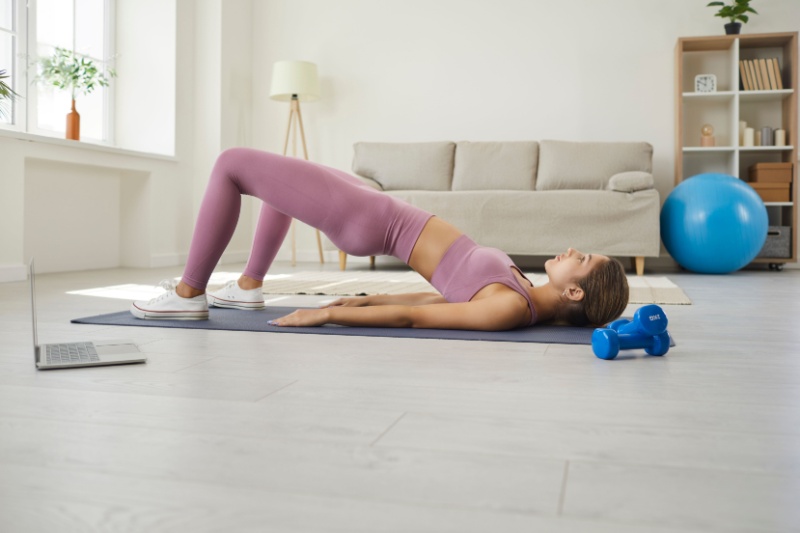Key Takeaways
- Sciatica results from a bone spur on the spine or a herniated disk pressing against the nerve.
- Physiotherapy for sciatica pain improves the range of motion and nerve function and provides muscle conditioning.
- Five exercises for relief include pelvic tilt, glute bridges, knee-to-chest, standing hamstring, and lying deep gluteal stretches.
Have you ever felt pain that involves tingling or numbness in your back or butt, also radiating down your leg? It may be due to sciatica.
What you need to know:
How can exercises help relieve sciatica pain?
Sciatica is the inflammation of the sciatic nerve. It’s usually a result of a bone spur on the spine or a herniated disk that presses against the nerve. Physiotherapy for sciatica pain prevents recurrences and deals directly with the underlying causes. It improves range of motion and leg mobility, reduces acute pain in the sciatic nerve, improves nerve function, promotes soft tissue healing, and provides muscle conditioning.
5 recommended exercises to relieve sciatica pain
Physiotherapy for sciatica pain must be done regularly for it to be effective. You must focus on body mechanics and exercise posture while performing the exercises. Here are 5 exercises to relieve sciatica pain.
Knee-to-chest exercise

Lie flat on the ground and pull the feet towards your glutes to bend the knees. Grab one leg and pull the knee to your chest. Hold it to a count of 5. The other foot and lower back should be pressed on the ground. While performing this exercise, you can straighten the other leg and pull in both knees simultaneously. Do 5 repetitions.
Standing hamstring stretch
Stand straight on an elevated platform like a stair. Straighten one leg to the front, keep your back straight, and push your glutes backwards to bend forward. The other knee will bend to allow the motion. Hold to a count of 5, then repeat with the other leg. Do 5 repetitions for each leg.
Pelvic tilt exercise
Lie straight on your back with your knees bent and hands by your side. Tighten your core and try pressing the floor with your back while rocking the hips and pelvis upwards. Imagine you are trying to touch your belly button to your backbone. Feel the arch. Hold to a count of 5 and repeat 5 times.
Glute bridges

Lie flat on your back and pull your feet in to bend the knees. Put your arms by your side. Tighten your core and raise your hips off the ground by pushing through your heels until the hips align with the shoulders and knees. Hold to a count of 5 and lower to the ground slowly. Repeat 5 times and avoid arching the back.
Lying deep gluteal stretch
Lie on your back and pull your feet in to bend the knees. Now, raise your left ankle and place it on the right knee. Place your palms behind the right thigh or loop a towel around it to pull the knee towards your chest. Your head and back should be touching the floor. Hold to a count of 5 and do 5 repetitions. Then, move on to the other leg and do the same.
Physiotherapy for sciatica pain increases muscle strength, enhances blood flow, improves bone health, and nourishes the spine. Incorporate it for effective relief from symptoms to maximize these benefits.
Stay tuned to the Activ Living Community. Keep up to date with the latest health tips and trends through expert videos, podcasts, articles, and much more on nutrition, fitness, mindfulness, and lifestyle conditions like Asthma, Blood Pressure, Cholesterol, and Diabetes. Activ Living ke saath sahi sehat ki shuruat ABHI karo.
You may also be interested in the following blogs:
Popular Searches
How to lower blood pressure | Fruits good for liver | Unhealthy foods | Ragi Benefits | Basal Metabolic Rate | Acupressure points for High Blood Pressure | Ayurvedic medicine for blood pressure | How to control cholesterol at home | Homeopathy for Asthma | Biological Age | Home remedies for TB | Natural beta blockers | Negative effects of internet | Types of walking | Blood pressure calculator | Blood sugar calculator | BMI Calculator





 1800-270-7000
1800-270-7000











